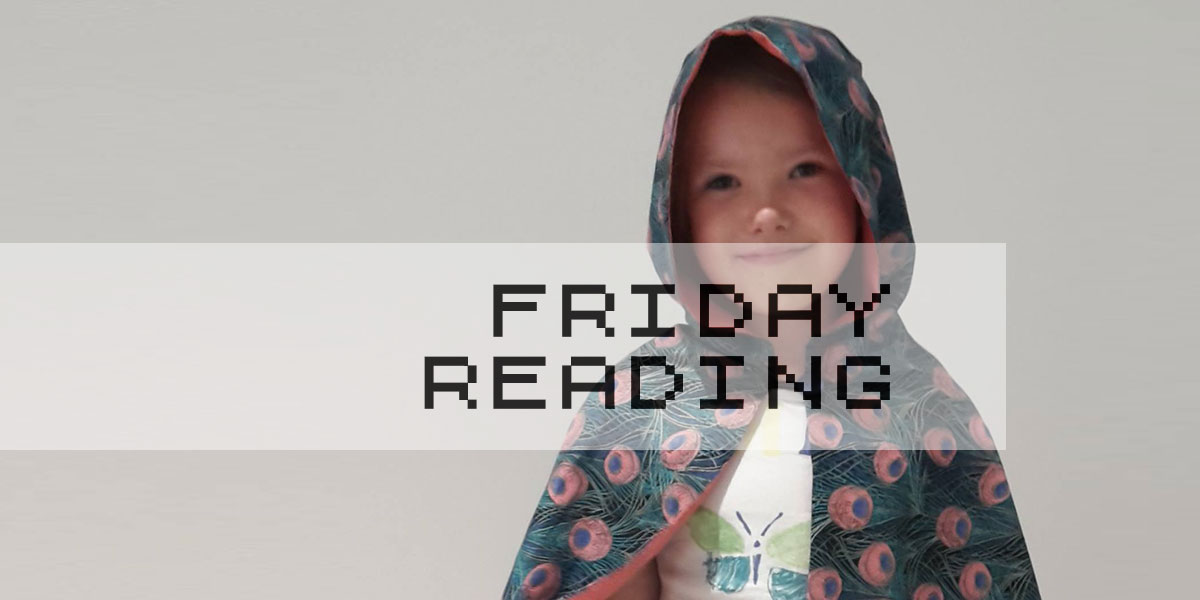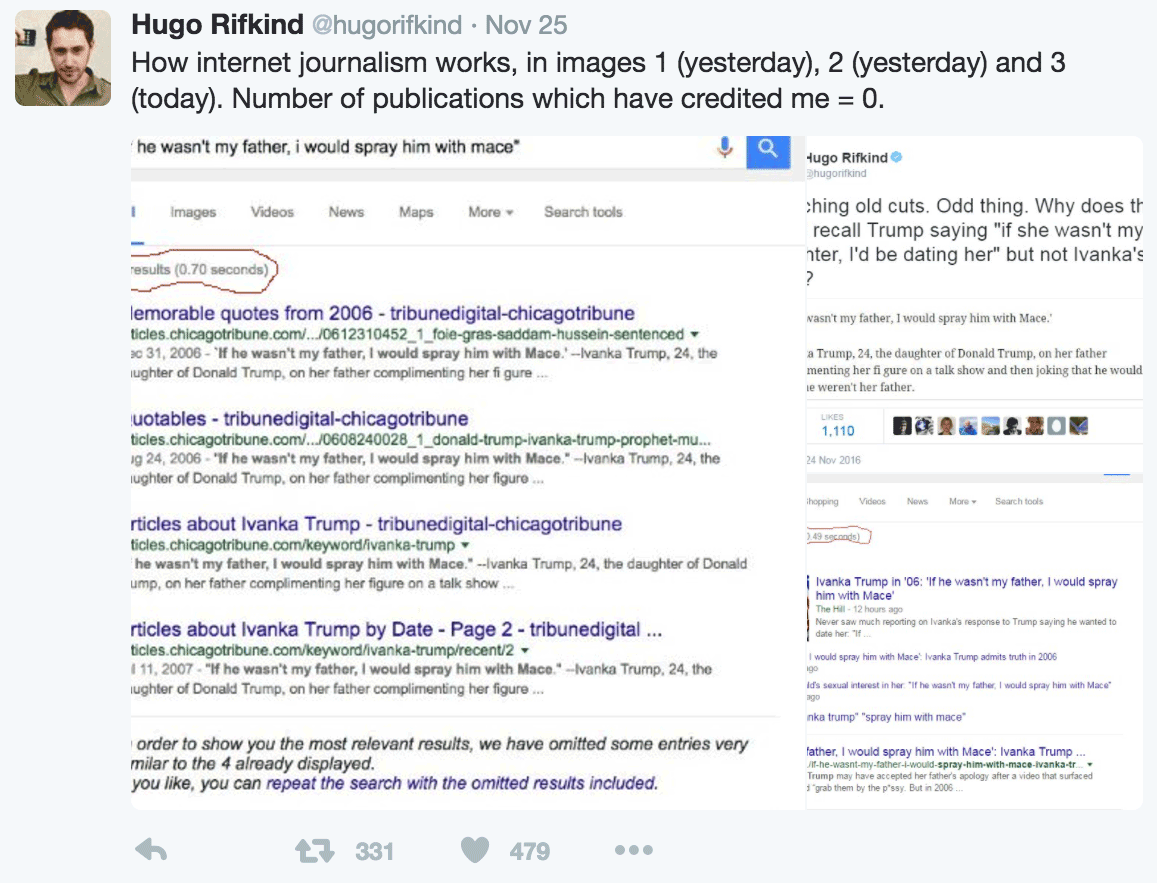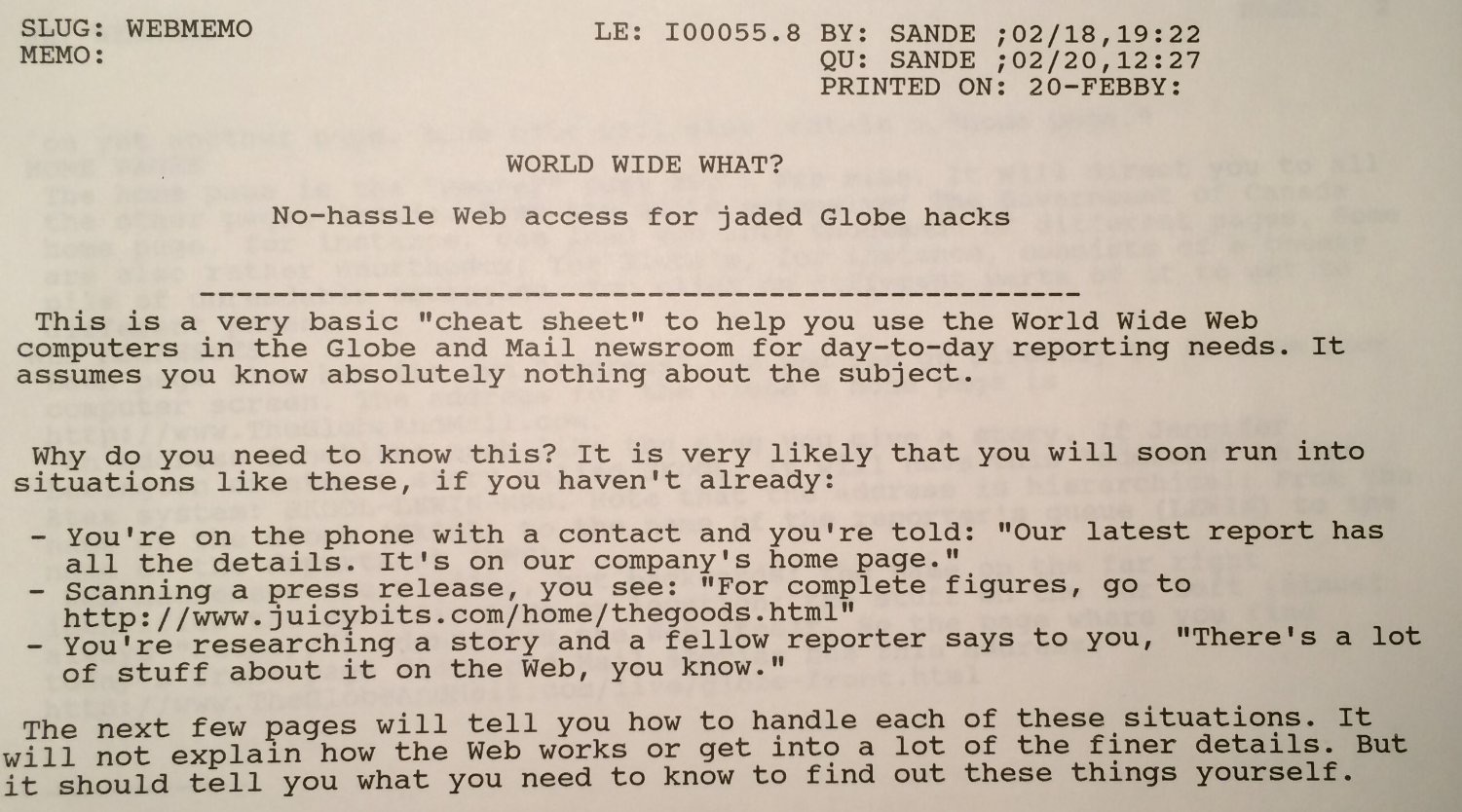Friday Reading S05E04
Friday Reading is a weekly series of recommended reads from journalist and designer Martin Belam covering journalism, media and technology. It sometimes comes out on a Sunday.

My wife has started a business selling hand-made children’s fancy dress costumes and accessories. Go on, chuck it a like on Facebook: Sea and Forest.
![]()
If you only read one thing from this list, make it every single word of Chris Moran on “What I learned from seven years as the Guardian’s audience editor”
So many key points to highlight, but I’d pull out:
- “We are always at our best when data is used to inform rather than lead the editorial process.”
- “We need to be careful about framing the questions we ask in a way that skews the data. We need to be clear about where our data is partial. We can’t expect to use historical data to predict a very different future. Data can lead to horrible decisions and pointless delays if it isn’t used judiciously.”
- “Snowfall was a critical moment in the development of digital journalism. But this industry has allowed itself to ignore pretty strong signals and instead make convenient assumptions about what makes people read for longer. Sometimes text alone is the best digital format. Sometimes a picture and a caption is enough. Personally I’d love to see any body handing out awards for interactive formats or visual treatments demanding attention time analytics to be handed over as part of the submission.”
- “If you’re aiming for a situation where data informs editorial judgment and editors respond with nuance then you have to be honest about it. Every time someone ignores a consistent trend in data, fudges a data point to avoid it spoiling a ‘success’ story, leaves out some data that would disprove a personal theory, makes up data on the hoof to avoid looking ignorant or generalises off the back of a single data point, we do huge damage to ourselves.”
![]()
Meanwhile the “fake news” feeding frenzy continued this week…
Digiday has an interview with ex-Facebook employee Adam Schrader about how editorial controls have failed to dampen the enthusiasm for fake news on the social network. There’s a line in it that should give us all cause for concern:
“There was once a video of an eagle snatching up a kid and flying away with it that was trending, for example, that later turned out to be false.”
But ask yourself how many ‘reputable’ news outlets ran with this story anyway?
It’s like the “CNN broadcast hardcore pr0n by mistake” story that has been doing the rounds the last few days. Sites like the Independent have done the old switcheroo with their story, going from “This thing happened” to “CNN are angry about reports that this thing has happened” without any real evidence that the Independent has done anything themselves to stand-up or debunk the story.
I feel a bit sorry for the often junior journalists who end up with their names plastered on these bullshit stories because senior editors who should know better are prioritising Chartbeat #numbers over accuracy.
And worth remembering that Facebook ditched editors and replaced them with an algorithm because they were getting complaints of partisanship from the right.
![]()
Here’s a good breakdown by Sapna Maheshwari of how one erroneous tweet gather pace to fuel a theory that anti-Trump protestors had turned up in buses and were being paid to appear: “How Fake News Goes Viral: A Case Study”
![]()
And this is another good piece, looking at how existing conspiracy theories about Hillary Clinton’s health became a perfect storm when she did become ill in public.
“Fact checking doesn’t help, especially when the choir is being preached to. What’s more, with the support of mainstream media, countless articles were being published about Clinton’s health — drawing more and more attention to the issue. And when she actually became sick, conspiracy theorists and journalists alike coalesced around the topic, publishing continuous coverage and sending out dire notifications.”
I like the conclusion – that deliberately biased stories being fed in to polarised networks is a distinct problem from people making implausible s*** up for numbers. And keep an eye out for the #MEGA hashtag in coming months and weeks.
![]()
Hugo Rifkind got on the wrong side of the “fake news” industry this week. He dug out an old quote about Ivanka Trump threatening to spray her father with mace, then pointed out that once he had tweeted it, it went from being mentioned 4 times in Google to over 12,000 times, in thousands of articles where he wasn’t credited for finding it.

Then it turned out to probably be a fake quote anyway.
Oh Hugo
![]()
And then throw this into the mix: “More than 80 percent of students were unable to tell an advertisement — labeled as sponsored content — from a news story.”
![]()
“I was assigned to “write” seven posts a day by a team of editors who between them had no previous editorial background whatsoever.”
I was worried this might be a former employee of mine, and then I read this line, and I was sure it was someone who used to work for me :-)
“The secret life of a clickbait creator: lousy content, dodgy ads, demoralised staff”
![]()
“I’d argue that the media’s portrayal of Clinton has less to do with her actions than with the persistent tainting of female witnesses based on gender bias. In short, my research shows that women are doubted. Women are seen as threatening stability when they show ambition and seek power. Their success threatens the association of masculine power with order. From Eve to Clytemnestra to Lady Macbeth, powerful female figures stir up deep-seated and irrational fears of women’s proximity to power. They prompt anxieties about masculinity.”
“It wasn’t just ‘fake news’ presenting a fake Hillary Clinton” – Leigh Gilmore
![]()
Jack Schofield with some words on how to avoid getting ensnared by the UK’s snooper’s charter.
![]()
When Facebook is doing stuff like this around real-time football data, it really makes you wonder whereabouts along the digital distribution chain news organisations are still adding value.

![]()
“She’s called a slapper, a scrounger, and I try and support her, because you have a duty of care in my job whether you want it or not. I’m not her employer, I don’t employ any of these people – they’re self-employed. But as a person I think you should look after people, and because a lot of the people who come to me are vulnerable, I have adopted a duty-of-care attitude first.”
Amazing Buzzfeed piece by Rossalyn Warren, interviewing the man who is ‘agent’ to loads of the single-mums you see getting criticised in the tabloids. And taking a 35% cut for his trouble.
![]()
Instagram has added live video. Yay! Another platform for news brands to worry about. The video is unlike Facebook’s native efforts though because it is totally ephemeral. The video vanishes after transmission. Question for the lawyers – if a news organisation spreads misinformation and libels somebody on a transient live transmission, can one hand clapping hear a tree falling in the forest?
It’s not really aimed at the media though, the product manager said: “The use case that caught our attention was people just hanging out on live, particularly young people. After school, they jump on a livestream and hang out. That use of live is particularly interesting to us.”
![]()
Rory Cellan-Jones radio documentary on “The Secret History of Social Networking”
![]()
Another bit of digital nostalgia for you courtesy of Doug Sanders: “In February, 1996 I wrote a memo telling my fellow reporters how to use a new technology. A colleague cleaning out his desk just found it”

There are several pictures of the memo across a series of tweets.
![]()
Good long read on a boy who went from Birmingham to fight and die for Islamic State in Syria.
![]()
Obnoxious racist right-winger obsessed with the classics. Hmmmm, remind you of anyone?
“For many the study of Classics is the study of one elite white man after another. The same texts that are for us sources of beauty and brutality, subjects of commentary and critique, are for these men (and they really are almost exclusively men) proof of the intellectual and cultural superiority of white maleness. The Alt-Right is hungry to learn more about the ancient world. This is my call to arms for all classicists. No matter how white and male Classics once was, we are not that anymore. In spite of the numerous obstacles that remain, our field is now more diverse than ever, and that is something to be proud of. These men are positioning themselves as the defenders of Western Civilization. Classicists, when you see this rhetoric, fight back. We must not allow the Alt-Right to define what Classics will mean in Trump’s America.”
“How to Be a Good Classicist Under a Bad Emperor” – Donna Zuckerberg
![]()
Always worth keeping an eye on developments in this space – WeChat is introducing mini apps. App stores within app stores.
![]()
Really interesting piece about the gambling culture, and law-breaking, that has gathered around arcade fishing games, which along the way imparts the wisdom that there was once a clampdown on pinball machines because they were seen as dangerous.
![]()
The world’s largest game of Pac-Man.
![]()
I can’t possibly finish an edition of Friday Reading full of musings about “fake news” without sharing this, which I very much enjoyed too: “July 23 1982: The Day Bigfoot Showed Up at a Military Base”